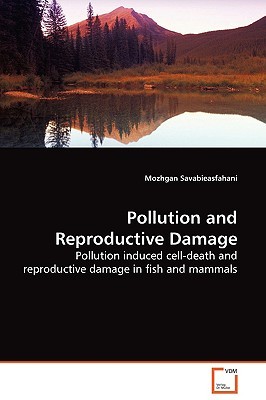
- We will send in 10–14 business days.
- Author: Mozhgan Savabieasfahani
- Publisher: VDM Verlag
- ISBN-10: 3639135830
- ISBN-13: 9783639135831
- Format: 15.2 x 22.9 x 1.1 cm, softcover
- Language: English
- SAVE -10% with code: EXTRA
Reviews
Description
Hormonally active compounds (pesticides, herbicides, bacterial agents, and synthetic hormones) continue to be released into the environment. These compounds are widely spread, highly persistent, bioavailable, and most importantly present at physiologically relevant concentrations. Many aquatic and terrestrial populations have exhibited signs of distress or have been severely impacted because of exposure to such pollutants. Apoptosis is a well-conserved hormonally controlled physiological pathway that is highly sensitive to exposure to pollutants and xenobiotics. Endocrine active compounds can cause disturbances in hormonal control of apoptosis and alter development or maintenance of reproductive tissue in growing or reproductively mature individual. These changes can cause reduced reproductive capacity in the exposed individual. Here we offer first evidence that petrochemical contaminants induce apoptosis in highly proliferating reproductive, hematopoietic, and immune (thymus, bone marrow, and spleen) tissue of small mammals living on contaminated sites; we also show that aquatic pollution effects on reproductive fitness can be monitored using in vitro cultures of fish eggs.
EXTRA 10 % discount with code: EXTRA
The promotion ends in 16d.19:32:54
The discount code is valid when purchasing from 10 €. Discounts do not stack.
- Author: Mozhgan Savabieasfahani
- Publisher: VDM Verlag
- ISBN-10: 3639135830
- ISBN-13: 9783639135831
- Format: 15.2 x 22.9 x 1.1 cm, softcover
- Language: English English
Hormonally active compounds (pesticides, herbicides, bacterial agents, and synthetic hormones) continue to be released into the environment. These compounds are widely spread, highly persistent, bioavailable, and most importantly present at physiologically relevant concentrations. Many aquatic and terrestrial populations have exhibited signs of distress or have been severely impacted because of exposure to such pollutants. Apoptosis is a well-conserved hormonally controlled physiological pathway that is highly sensitive to exposure to pollutants and xenobiotics. Endocrine active compounds can cause disturbances in hormonal control of apoptosis and alter development or maintenance of reproductive tissue in growing or reproductively mature individual. These changes can cause reduced reproductive capacity in the exposed individual. Here we offer first evidence that petrochemical contaminants induce apoptosis in highly proliferating reproductive, hematopoietic, and immune (thymus, bone marrow, and spleen) tissue of small mammals living on contaminated sites; we also show that aquatic pollution effects on reproductive fitness can be monitored using in vitro cultures of fish eggs.


Reviews